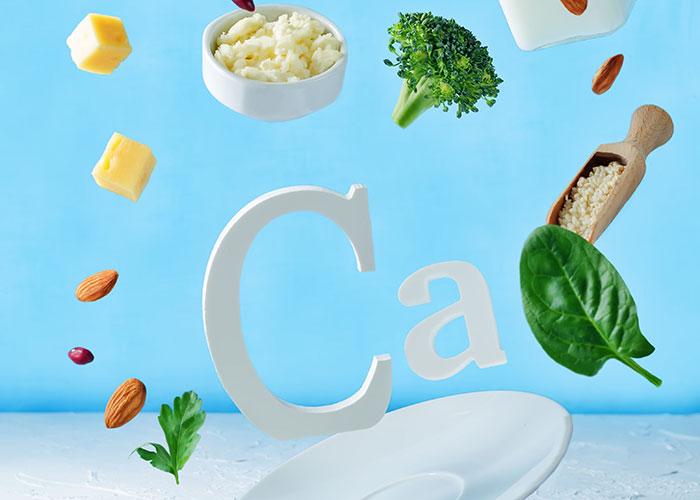
A living healthy lifestyle is important for the longevity and quality of your life. Positive habits and better health will lead to a reduced risk of chronic diseases. You will be healthy if you eat a balanced diet and exercise regularly. You have many options to improve your overall health. These include books, audio relaxation tapes and brochures. Achieving a healthy body will make you feel happier and more productive.
Living healthy is all about eating well. High-quality, high-nutrition foods are emphasized in the program to help you maintain a healthy lifestyle. It treats you as an individual, not just as a treatment. These vital areas will help you make positive changes in your overall well-being and decrease your chance of developing chronic diseases.

Small changes can make a big difference in your health and wellbeing. Even something as simple and as easy as not eating second-hand potatoes can make a difference. Start small and gradually work your way to a healthier lifestyle. Even if your motivation isn't there, it's possible to gradually improve your lifestyle with healthy habits. It's better to start slowly, because it will pay off over the long term.
For your long-term mental and physical health, a healthy lifestyle is essential. Studies show that a healthy lifestyle can lower the risk of certain diseases, such as diabetes, heart disease, and obesity. Healthy lifestyles can improve the relationships in the family. People who have a healthy lifestyle tend to live longer. There are many benefits to a healthy lifestyle. You will feel healthier and happier. You'll be able wear your favorite jeans again without feeling ill or unfit.
Eat more fruits, vegetables and you will be healthier. The World Health Organization defines healthy as eating more fruits and vegetables than those who don't. The World Health Organization further defines lifestyle as a combination or values, attitudes, and environments. Being healthy is all about making good choices. Balance is key to a healthy lifestyle. Include enough vegetables in your daily meals to ensure this.

Healthy living should include eating and doing activities that support the brain's growth and development. This will make you more fit and decrease your chances of getting diabetes. You'll also be more comfortable sleeping. Eating healthy foods will make it easier to live well. You will have more energy and a healthier lifestyle which will keep you healthy. However, emotional health is equally important. If you have high stress levels, you're more likely to smoke, drink alcohol, and argue with others. It is important to practice yoga, meditation, and physical fitness.
FAQ
How can I get enough vitamins
Most of your daily vitamin requirements can be met by diet alone. Supplements are an option if you are low in any vitamin. A multivitamin supplement can provide all the vitamins you require. You can also get individual vitamins from your local pharmacy.
Talk to your doctor if there are any concerns about getting enough nutrients. For example, dark green leafy vegetables such as spinach, broccoli, kale, collard greens, turnip greens, mustard greens, bok choy, romaine lettuce, arugula, and Swiss chard are rich in vitamins K and E. Other good sources include oranges, tomatoes, strawberries, cantaloupe, carrots, sweet potatoes, pumpkin, and squash.
Ask your doctor if there is any doubt about how much vitamin you should be taking. Based on your medical history and your current health, your doctor can recommend the correct dosage.
How can I determine what is best for my health?
Your body is your best friend. Your body knows what you need when it comes time to eat, exercise, and get enough rest. It's important to pay attention to your body so you don't overdo things. Listen to your body and make sure you're doing everything you can to stay healthy.
What's the difference between a virus & a bacterium?
A virus can be described as a microscopic organism that cannot reproduce in another cell. A bacterium is an organism that splits itself in two. Viruses are small, around 20 nanometers in size. Bacteria are much larger, at 1 micron.
Viruses spread easily through contact with infected bodily tissues, such as saliva and urine, semen, vaginal secretions or pus. Bacteria are usually spread through direct contact with contaminated objects or surfaces.
Viral infections can also be introduced to our bodies by a variety of cuts, scrapes or bites. They can also penetrate the skin through the eyes, nose or mouth.
Bacteria can get into our bodies through cuts, scrapes and burns, insect bites, or other skin breaks. They may also be introduced into our bodies through food and water as well as soil, dirt, dust, and animals.
Viruses and bacteria both cause illness. But viruses do not have the ability to multiply within their hosts. They only cause disease when they infect living tissue.
Bacteria may spread to other people and cause sickness. They can even invade other parts of the body. We need antibiotics to get rid of them.
What can you do for your immune system to improve?
The human body is composed of trillions if not billions of cells. These cells combine to form organs or tissues that serve specific functions. If one cell dies, a new cell takes its place. Chemical signals, called hormones, allow cells to communicate with each other. Hormones regulate all bodily functions from growth and developmental to metabolism and immunity.
Hormones refer to chemicals produced throughout the body by glands. They travel through the blood stream and act like messengers to control how our bodies function. Some hormones come from the body and others from outside.
The hormone-producing glands release their contents into bloodstream. This is when hormone production starts. Once hormones have been released, they travel through the body until reaching their target organ. Some hormones are only active for a brief time. Other hormones can remain active longer, and they continue to affect the body's functionality even after leaving the bloodstream.
Some hormones can only be produced in large quantities. Others are produced in smaller amounts.
Certain hormones can only be produced at specific times in life. For instance, estrogen is produced during puberty, pregnancy, menopause, and old age. Estrogen helps women develop breasts, maintain bone density, and prevent osteoporosis. Estrogen promotes hair growth, and skin stays soft and smooth.
Statistics
- WHO recommends consuming less than 5% of total energy intake for additional health benefits. (who.int)
- Extra virgin olive oil may benefit heart health, as people who consume it have a lower risk for dying from heart attacks and strokes according to some evidence (57Trusted Source (healthline.com)
- In both adults and children, the intake of free sugars should be reduced to less than 10% of total energy intake. (who.int)
- According to the Physical Activity Guidelines for Americans, we should strive for at least 150 minutes of moderate intensity activity each week (54Trusted Source Smoking, harmful use of drugs, and alcohol abuse can all seriously negatively affect your health. (healthline.com)
External Links
How To
What does "vitamin" actually mean?
Vitamins can be described as organic compounds found in food. Vitamins are essential for our bodies to absorb nutrients from the foods we eat. Vitamins are not made by the body, so they must be obtained through food.
There are two types: water-soluble and fat-soluble vitamins. Water-soluble vitamins dissolve quickly in water. Vitamin C,B1(thiamine), B2 (2riboflavin), and B3 (3niacin), as well as vitamin C,B1, B2 (riboflavin), and B3 (niacin), vitamin B6 (pyridoxine), vitamin folic acid (biotin), pantothenic, and choline are examples. Fat soluble vitamins are stored in the liver and fatty tissue. Some examples include vitamin D and E, K, A and beta carotene.
Vitamins can be classified according to biological activity. There are eight major vitamin groups:
-
A - vital for healthy growth.
-
C - essential for nerve function and energy generation.
-
D - Essential for healthy teeth and bones.
-
E is needed for good reproduction and vision.
-
K - essential for healthy muscles, nerves, and bones.
-
P - vital for building strong bones andteeth.
-
Q – aids digestion of iron and iron absorption
-
R is required for the production of red blood cells.
The recommended daily allowance (RDA) of vitamins varies depending on age, gender, and physical condition. The U.S. Food and Drug Administration has established the RDA values.
For adults aged 19 and older, the RDA for vitamin B is 400 micrograms daily. Pregnant mothers need 600 micrograms per days because it is vital for the development and growth of their baby. Children ages 1-8 require 900 micrograms per day. Babies under one-year old require 700 mg per day. Between 9 and 12 years of age, however, this drops to 500 mg per day.
Children ages 1-18years who are obese need 800 micrograms per day while those who are overweight need 1000 micrograms per day and children who are underweight need 1200 micrograms per day to meet their nutritional needs.
2200 mg of vitamin A per day is required for children aged 4-8 who have been diagnosed by anemia.
Adults over 50 years of age need 2000 micrograms per day for general health. Breastfeeding or pregnant women require 3000 micrograms per daily due to higher nutrient demands.
1500 micrograms is the recommended daily intake for adults aged 70+, who lose approximately 10% of muscle each year.
Women who are pregnant or nursing need more than the RDA. Pregnant mothers need 4000 micrograms per daily during pregnancy and 2500 after giving birth. Breastfeeding moms need 5000 micrograms each day when breastmilk production occurs.